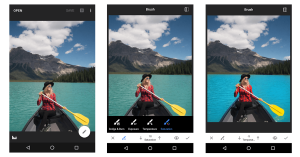Some paid search pundits have predicted the impending death of keywords in PPC, including our own Larry Kim – and the day may come when we don’t have to bid on specific keywords, but for now, keyword selection is still a huge part of a solid PPC marketing strategy. And that means you need to be familiar with keyword analysis – a method of breaking down keywords to determine if they’re right for your campaigns.
In this post, I’ll share three forms of keyword analysis to help you separate the winners from the budget busters.
1. Keyword Intent Analysis

The first step to keyword analysis is understanding the ripple effect of intent. A user searching for “wedding cake” could just be looking for pictures, where as a user searching for “wedding cake boston” is ready to sign a contract, providing the tasting goes well.
Long-tail keywords aren’t new and most of us already ensure they’re present in our ad groups. The more insidious keywords are “how”, “diy”, and “free”. These keywords can be present in a long-tail keyword, like “diy wedding cake” or “how to waterproof deck”, but the intent is not transactional. These users are looking for a way to avoid spending money, and they may use your informational content, but they will take longer to convert. (These types of searches are best to target with organic content.)
Thanks to remarketing, all is not lost!
Those non-transactional, top-of-funnel terms can still serve to queue up prospects to be reminded of your brand – once you know someone is interested in wedding cakes or home improvement, you can add them to a remarketing list so your brand stays top of mind as they move further down the funnel. However, it is vital those terms live in a separate campaign that has a unique budget. By separating the top-of-funnel searches into their own ad groups and campaign, your transactional long-tail terms will be free to leverage the majority of your account’s budget without watching less deserving keywords get all the money since they have more historical data.
2. Keyword/ SERP Analysis
Not all SERPs are created equal. Some have a heavy focus on shopping and images, while others leverage Google+ locations. Being in position #1 often means the highest CTR, but sometimes position #2 or even 2.5-3.4 can hold respectable CTR without blowing one’s budget on position one ego. By leveraging the Ad Preview and Diagnosis tool in AdWords, you’ll be able to get a sense of what the SERP will look like based off location of the user, domain of user (domestic and international) as well as what device they’re using.

This SERP focuses specifically on users in Palmdale CA on a desktop. You can see that Google rewards ads that are in the user’s location, but also is confused as to the user’s intent. Note that the locations with ratings are not ads, but correspond to the points on the map in the top right corner.

This SERP has the same settings, but note how only position #1 and #2 are given the top of page treatment so the SERP can devote more real estate to map listings. Also, the uncertainty of the user’s intent is gone because of the addition of “near me.” Google only serves grooming services ads in those top spots, instead of the mix of ads for classes and services.
Once you know what the SERP looks like, you’ll be able to make an informed decision on whether to bid aggressively or hold back the budget for more clicks in a more opportune placement.
3. Keyword Cost Analysis

It is inevitable that some keywords, no matter how good they are, will fall outside your campaign’s budget. It is vital to be mindful of a keyword’s average CPC (cost per click), as well as top-of-page CPC, for the following reasons:
- A keyword with a high CPC can starve other keywords that would allow an ad group to deliver more clicks for the same price.
- Since ad groups function off of the same campaign budget, it’s possible to delay data acquisition on the viability of an ad group because one ad group has the most expensive keyword that got the click.
- If the campaign is set to Search with Display Select, underbidding on too many keywords will result in the bulk of the campaign budget being directed into the display network (which is less transactional and will inflate the account’s impressions without yielding clicks or conversions).
Sometimes a keyword is too good to pass up, so it’s important to handle it correctly by ensuring it’s in a campaign that can support the CPC. Make sure the targeting of the campaign is laser-focused on the location, time, and income level of the location that will give all your keywords in the ad group the best chance for success.
Another solution for keywords is to try the singular version instead of the plural or vice versa. For example the term, “invention patent” costs $ 12.60 to be at the top of the page, where as “invention patents” costs $ 15.10. Just by leveraging the singular term the advertiser can save $ 2.50 per click, or $ 250 per hundred visits to their site. Given that broad, modified broad, and exact close variant all allow for the singular/plural version of keywords, there’s no reason not to opt into the cheaper click.
Keyword analysis begins with assessing consumer patterns and search trends, but by no means ends there. These are our favorite three ways to enrich the keyword analysis process, what are yours?
(231)








